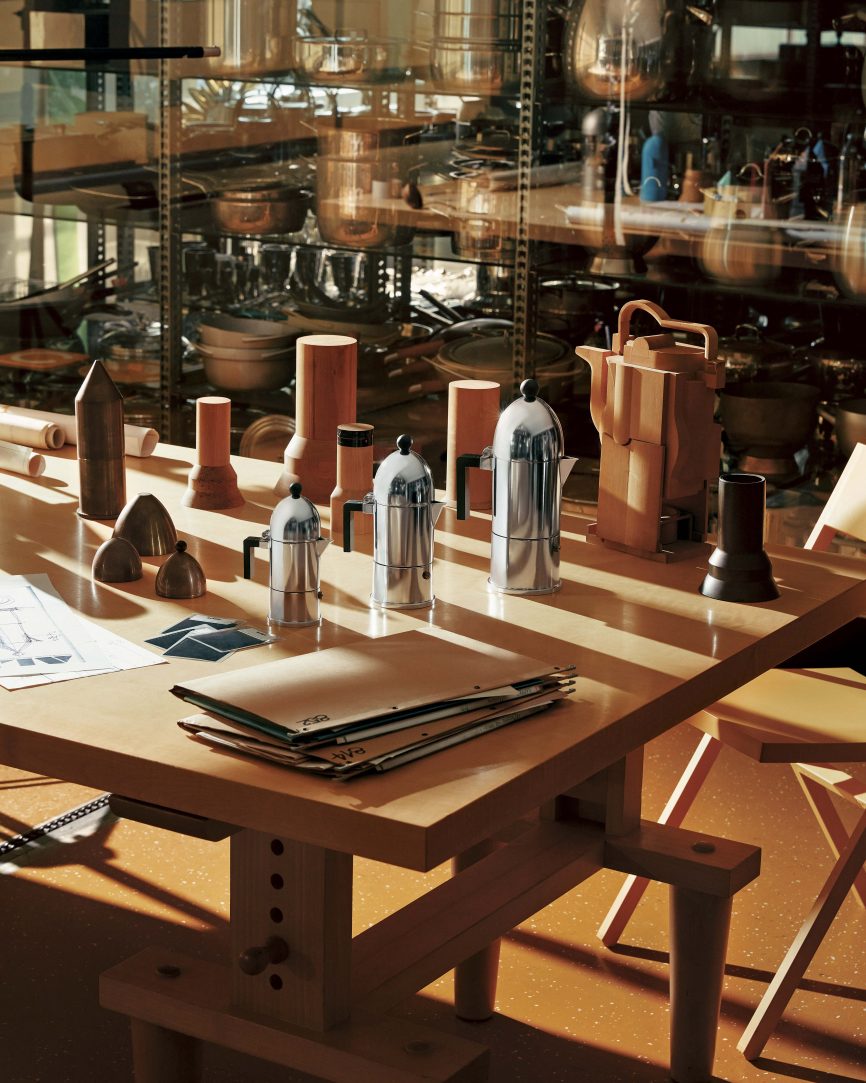At the Alessi Museum, displayed on long shelves that wrap around a central corridor, are rows of coffee sets, cups, prototypes, sketches and more that embody Italian design history. The museum and brand headquarters are in the north of Italy in Omegna, not far from Lake Orta. This is where Giovanni Alessi founded a brass and steel foundry in 1921. Things changed in the 1970s when the founder’s grandson, Alberto, pivoted to balancing industry and art. He began making objects that were functional as well as artistic, relying on the creativity of Italian design masters—Ettore Sottsass, Aldo Rossi, Achille Castiglioni and Alessandro Mendini, among others. “I worked as a mediator between the most interesting expression of international creativity that I can achieve and, on the other hand, the public’s imagination,” says Alberto Alessi whose other collaborators include Philippe Starck, David Chipperfield and the late Virgil Abloh.
The museum’s massive collection—thousands of objects, drawings, photographs, and books—as the
curator Francesca Appiani explains, is divided into anthropological categories ranging from drinking to
spirituality. “This way, we can determine which aspects of daily life have yet to be touched by the so-called Alessi encyclopaedia, and discover evolution in cultural and domestic habits.”

In the ’70s, the 9090 was born, an espresso maker beautiful enough to be brought to the table. Alessi calls it an “amphibious” product, as it emerged from its place in the kitchen and was brought out in the open, easily seen by guests. The museum also hosts “frozen” products—which haven’t been produced (yet)—such as Satyendra Pakhalé’s Steelwave collection of stackable metallic tableware.



It also houses limited editions such as Guido Venturini’s massive Lingam incense burning vase, and objects created by their Alessi Study Centre, which focuses on emerging talents. Indian designer Sanchita Ajjampur was one of the participants in the first workshop in the early 1990s. Her creation—themed on the “memory of the offering” ritual—was an evocative basket wrapped in a copper-coloured metallic veil. Some years later, Ajjampur was invited to decorate a Mendini-designed porcelain vase for the Alessi and Mendini “100% Make Up” project; she was among 100 designers invited to replicate a vase in as many decorative modes.


An interesting discovery at the museum was Esercizio Formale, Ettore Sottsass’s limited-edition sketchbook from his 1961 India trip: “When I began collaborating with Ettore, I thought of publishing a book he had written. I asked him in 1978 and he agreed,” Alessi recalls. “I was expecting a design book, or at least his witty and original thoughts. Instead, he handed me stacks of sheets with drawings from a boat trip to the East. In any case, it went well.” Aside from what’s on display, there are also the flops. “Our company is destined to exist on the edge. As a result, failing indicates that we are at the forefront. I’m always concerned if we don’t fail for too long. Luckily, it doesn’t happen very often.”
The post Italy’s Alessi Museum and its iconic Indian finds appeared first on Architectural Digest India.




